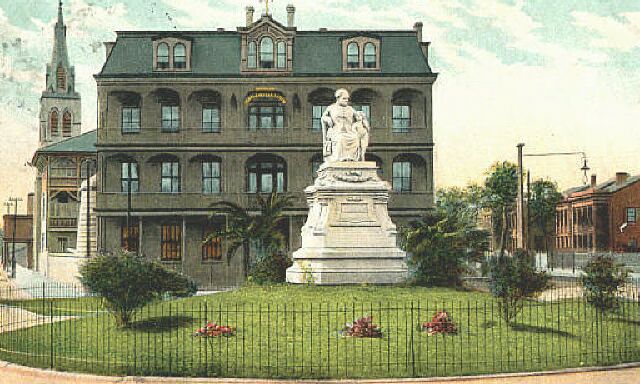
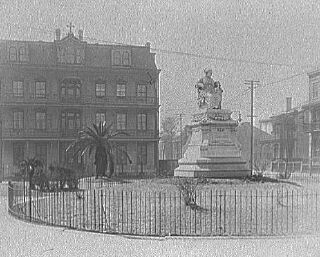
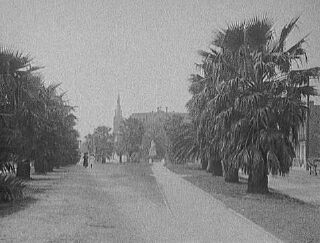
| Margaret Monument and Park, 1895 |
| Margaret Place, 1900 |
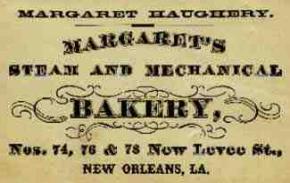
| Margaret Haughery monument; female orphan asylum in background, Camp Street at Prytania Street, 1908. |
| The Bread Lady of New Orleans |
| Advertisement for Margaret's Bakery |
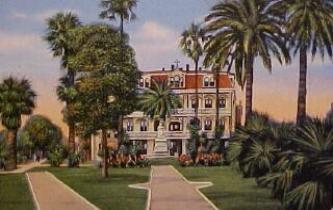
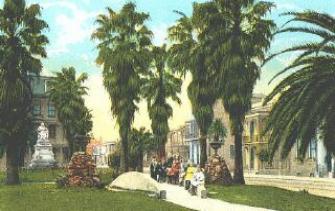
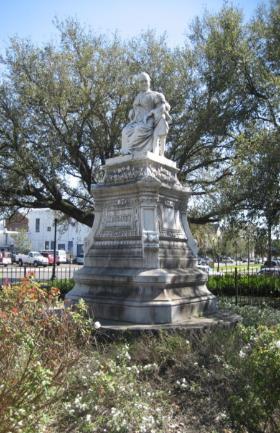
| Margaret Monument and Park, 1913 |
| Margaret Monument and Park, date unknown |
| Margaret Monument today |
Margaret Gaffney Haughery was born in Ireland in 1814 and came to America as a child. She
was orphaned at an early age and taken in by a Welsh family in Baltimore, MD. She married
Charles Haughery and had a child, but both her husband and infant child died in a yellow
fever epidemic within a year after their arrival in New Orleans, in the 1830's. Margaret hadn't
been formally educated, but she had a keen mind and fine business acumen.
Always concerned for the orphans and elderly, first, the dairy, and then the bakery she
started served from the very beginning as, not only money-making ventures, but a source of
sustenance for orphans and the poor and elderly. She was almost single-handedly
responsible for the construction of the Female Orphan Asylum of the Sisters of Charity built
in New Orleans in 1840. During the yellow fever epidemics in the city, she went from house
to house, without regard to race or creed, nursing the victims and consoling the dying
mothers with the promise of looking after their children. She ultimately supported as many
as seven orphanages---there was a great need, for there were many orphaned children
during the time of the Yellow Fever epidemics in the city.
For years, "the bread lady" or "our Margaret," as the citizens of New Orleans often called
her, could be found making deliveries of milk and bread in her cart to those in need.
Margaret's bakery was the first steam bakery in the South and became quite famous. When
Margaret Haughery died in 1882, her death was announced in the newspapers with blocked
columns as a public calamity. On the day of her funeral, all stores, city offices and
businesses were closed in respect. Governors and mayors were her pallbearers.
The desire to honor her memory with a monument was spontaneous across the city and
within two years a statue of Margaret, wrapped in her perennial shawl, hair pulled back in a
bun, with her arm around a small child, was completed. It was only the second time in the
entire United States that a woman had been honored with a monument. Known as Margaret
Place, the monument included a park and beautiful fountain.
Today, only the monument itself remains and it is in dire need of repair. But the citizens of
the Coliseum Square Association, who have taken pains to keep up the landscaping around
the monument, hope to raise funds for a canopy to protect the statue from further damage
and possibly even repair the effects that time and the elements have taken on the
monument.
Margaret Haughery died a wealthy woman and left her considerable estate to the
orphanages of New Orleans and the Daughters of Charity of St. Vincent de Paul. She was
honored in both her life and her memory...a much loved daughter of Ireland and a second
mother to New Orleans' orphaned children.
was orphaned at an early age and taken in by a Welsh family in Baltimore, MD. She married
Charles Haughery and had a child, but both her husband and infant child died in a yellow
fever epidemic within a year after their arrival in New Orleans, in the 1830's. Margaret hadn't
been formally educated, but she had a keen mind and fine business acumen.
Always concerned for the orphans and elderly, first, the dairy, and then the bakery she
started served from the very beginning as, not only money-making ventures, but a source of
sustenance for orphans and the poor and elderly. She was almost single-handedly
responsible for the construction of the Female Orphan Asylum of the Sisters of Charity built
in New Orleans in 1840. During the yellow fever epidemics in the city, she went from house
to house, without regard to race or creed, nursing the victims and consoling the dying
mothers with the promise of looking after their children. She ultimately supported as many
as seven orphanages---there was a great need, for there were many orphaned children
during the time of the Yellow Fever epidemics in the city.
For years, "the bread lady" or "our Margaret," as the citizens of New Orleans often called
her, could be found making deliveries of milk and bread in her cart to those in need.
Margaret's bakery was the first steam bakery in the South and became quite famous. When
Margaret Haughery died in 1882, her death was announced in the newspapers with blocked
columns as a public calamity. On the day of her funeral, all stores, city offices and
businesses were closed in respect. Governors and mayors were her pallbearers.
The desire to honor her memory with a monument was spontaneous across the city and
within two years a statue of Margaret, wrapped in her perennial shawl, hair pulled back in a
bun, with her arm around a small child, was completed. It was only the second time in the
entire United States that a woman had been honored with a monument. Known as Margaret
Place, the monument included a park and beautiful fountain.
Today, only the monument itself remains and it is in dire need of repair. But the citizens of
the Coliseum Square Association, who have taken pains to keep up the landscaping around
the monument, hope to raise funds for a canopy to protect the statue from further damage
and possibly even repair the effects that time and the elements have taken on the
monument.
Margaret Haughery died a wealthy woman and left her considerable estate to the
orphanages of New Orleans and the Daughters of Charity of St. Vincent de Paul. She was
honored in both her life and her memory...a much loved daughter of Ireland and a second
mother to New Orleans' orphaned children.